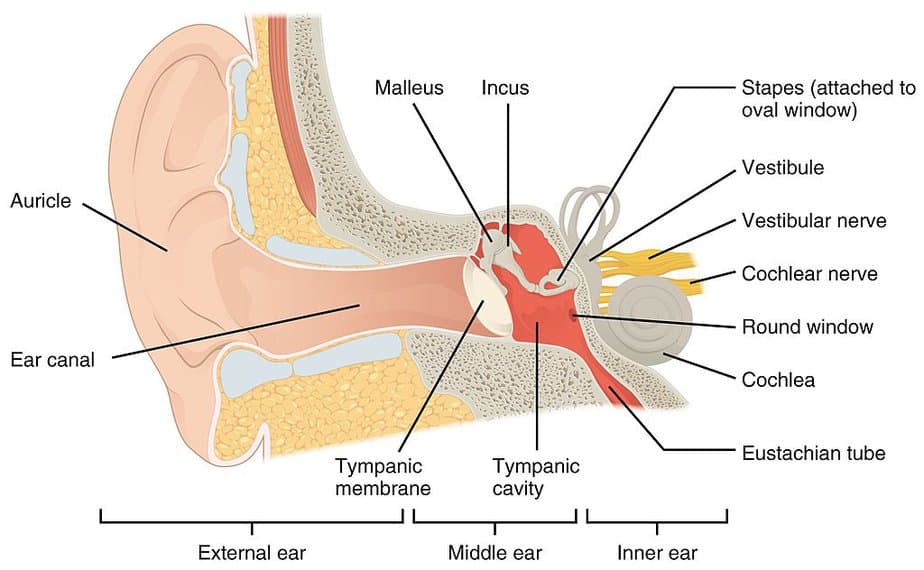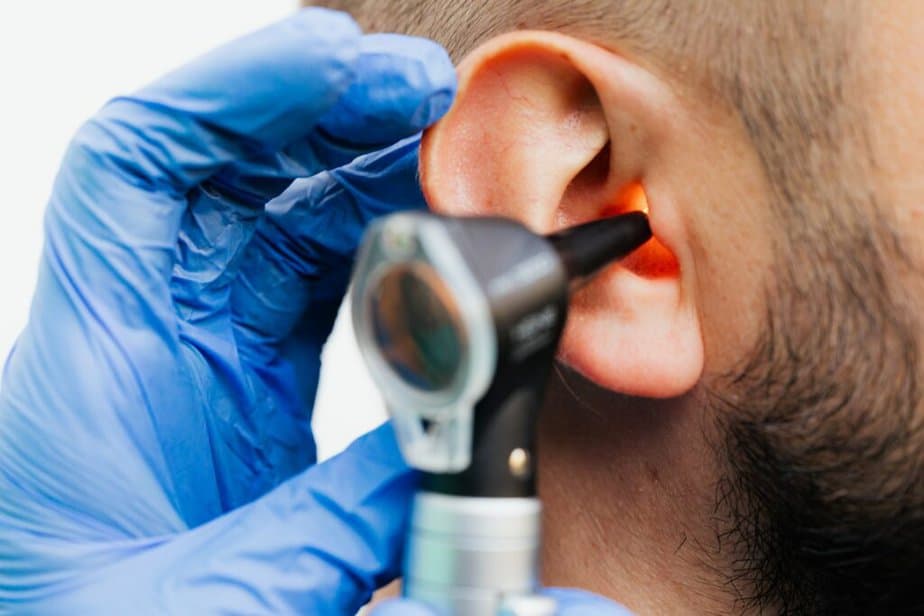Nebula Genomics DNA Report for Vertigo
Is vertigo genetic? We created a DNA report based on a study that attempted to answer this question. Below you can see a SAMPLE DNA report. To get your personalized DNA report, purchase our Whole Genome Sequencing!

Is Vertigo Genetic?
Vertigo is not found to necessarily have a genetic basis. Specifically, there is little to no evidence that vertigo is hereditary.
However, it is an advanced symptom of serious health issues and syndromes that have hereditary grounding. This is the reason the family genetic history of a suffering individual is usually considered.
There are many studies of inner ear problems that lead to the condition. Inherited genetic factors from ancestors may cause an individual’s susceptibility to problems of the inner ear like vertigo. These problems now produce numerous symptoms linked with vertigo.
A patient’s family history of ear infection or other related diseases can be used to assess their risk of suffering vertigo.
In 2021 scientists from Intermountain Healthcare & Iceland-Based deCODE used the HerediGene: Population Study to uncover new genetic discoveries about vertigo. Although genetic research on vertigo is still ongoing, they suggested that six genetic variants can predispose a patient: NF91, OTOP1, OTOG, OTOGL, TECTA, and ARMC9.
This peer-reviewed study revealed sequence variants that tell about diseases of the auditory system that lead to varying symptoms. However, it is essential to state that some symptoms have not been seen to be linked with these gene variants.
Introduction
Vertigo is a sensation that you are in an environment that is spinning. In other words, it makes you feel like the area is rotating around you. This sensation can make you lose balance and feel dizzy. Contrary to what many people believe, sensation is not a disease but an advanced symptom of different health problems or vestibular function.

When you experience vertigo, it is a sign that you may have an ailment that needs medication attention. As noted, it is a symptom of varying conditions and the most common of these is a problem with the balance organ in the inner ear.
There are two different types of vertigo: peripheral and central. Peripheral vertigo happens when there is an issue with the part of the inner ear that controls balance. These areas are called the vestibular labyrinth, or semicircular canals.
On the other hand, central vertigo is caused by a problem with the brain stem or back of the brain (cerebellum). This issue may arise in cases of tumors, stroke, traumatic brain injury, or infection.
Dizziness and vertigo are similar but there is quite a difference between the two. You experience dizziness as a feeling of being unbalanced. It can occur in instances such as motion sickness.
Conversely, vertigo gives a sensation that you are in an environment that is spinning. Today, the latter is becoming a common issue that can interfere with daily activities. Experts believe at least 40% of the American population suffers vertigo once in their lifetime.
Epidemiology
Studies have it that vertigo affects about 15% to more than 20% of adults in a very large population annually. Peripheral vertigo accounts for more than 25% of the complaints. It has a 12-month prevalence of 5% and a yearly incidence of 1.4%.
The prevalence of vertigo is related to age and appears to be more common in people over age 65. Its occurrence in women is about two to three times in men. There is also a high prevalence of related conditions, benign paroxysmal positional vertigo (BPPV), and vestibular migraine (VM).
Although the VM seems to be a different ailment, studies surrounding vertigo have greatly contributed to its recognition. Also, vertigo has a relationship with the isolated symptoms of unsteadiness and dizziness. The annual prevalence for vertigo was 48.3%, 39.1% for unsteadiness, and dizziness 35.6%.
In 2021, scientists published a paper in which 66% of female and 34% of male participants reported experiencing vertigo or dizziness in the United States between 2007 and 2015.
Symptoms
Vertigo is a feeling that you are in a spinning or moving environment while your body is stationary. It is a classic symptom of balance problems.
The symptoms of this issue are linked with vomiting or nausea, postural instability or unsteadiness, falls, and an entire change in the walking balance. It reduces the quality of the good life, especially for those who are aging.
Blurred sight, reduced consciousness level, loss of hearing, and difficulty in speaking are signs of vertigo. The symptoms can be insidious, that is, persistent from the onset. It can also be episodic or sudden.
The insidious form features symptoms of vertigo that last for more than a day. Changes that affect the balance of aging people can cause this form. Normally, they are prone to experience a little sensation of vibration due to slow nerve function. The signs of central vertigo are usually paired with this persistent onset.
On the other hand, episodic vertigo exhibits sudden symptoms that last for just a few moments. The signs affect the individual greatly even in that short period. Below is a summary of the symptoms of vertigo.
- Loss of balance
- Vomiting
- Headache
- Nausea
- Loss of hearing
- Excess sweating
- Buzzing or ringing sensation in your ears
- Involuntary movement of the eye
Causes
The condition can be very disturbing and scary and can be caused or triggered by varying health issues. This is why it is essential to inform a physician once you are experiencing signs.

Common causes of vertigo include:
Meniere’s disease: This is a condition that causes fluid build-up in the ear and can lead to a vertigo attack. It is accompanied by ringing in the inner ear, a heavy feel in the ear, and hearing loss.
Benign paroxysmal positional vertigo (BPPV): This is seen as the main cause of vertigo. It occurs during specific head movements such as standing up or bending over. Symptoms of benign paroxysmal positional vertigo include nausa and vomiting.
Labyrinthitis: This is the inflammation or infection of the inner ear. People who suffer from labyrinthitis often experience ringing in the ear, a change in vision, and recurrent headaches.
Vestibular neuritis: This is the inflammation of the vestibular nerves. It is quite similar to labyrinthitis except that the individual’s hearing is not impaired.
Other causes or triggers of vertigo include:
- Cholesteatoma
- Migraine
- Diabetes
- Stroke
- Head injuries
- Acoustic neuroma
- Certain medications
- Shingles in the ear
- Arrhythmia
- Ear surgery
- Syphilis
- Muscle weakness
- Multiple sclerosis
Diagnosis
If you experience varying symptoms, it is important to visit your physician. They will ask about your medical history, carry out a physical examination, and order further tests if necessary. Doctors can perform the following to ascertain if you are suffering from vertigo or not.
Vestibular test battery: This includes different tests that doctors use to identify a problem in the inner ear. They use goggles to observe eye movement responses either when the head is in motion or when water is put into the ear canal.
Fukuda-Unterberger’s test: This test is more like a physical examination to determine your balance. Your doctors will ask you to move around a place for 30 seconds with closed eyes. If you rotate only to one side, it could mean that you have a problem with your inner ear. It can tell if there is inflammation in the inner ear that can lead to vertigo.
Head impulse test: During this test, a specialist will move your head while you look steadfastly at a target. The doctor will observe to see how your ear balance system affects your eye movement.
Romberg’s test: During this test, a doctor will ask you to stand with your eyes closed and arms by your side. If they notice an imbalance, it could infer there’s a problem with your central nervous system.
Your doctor may also recommend imaging tests such as magnetic resonance imaging (MRI scan) or computed tomography (CT scan).
Treatment
Most times, the condition goes away on its own. For persistent or severe cases doctors can use different treatments to manage the condition. The ideal treatment for an individual is dependent on the root cause of the symptom.
Vestibular rehabilitation: This is a type of physical therapy that experts perform if the symptoms are a result of an inner ear problem. The rehabilitation gives strength to other senses that can help reduce the intensity of vertigo symptoms.

Surgery: Doctors can perform surgery when the condition is a result of a serious issue. Such issues include neck injury and brain tumors.
Canalith repositioning procedure (CRP): Doctors perform this procedure to move more calcium deposits into your body through your inner ear. They ususally perform this if you have BPPV.
Medication: You can use prescribed medications when you notice symptoms. However, this is done based on the symptoms you experience. For instance, you will have to take medications if your vertigo is a byproduct of an infection or an inflammation.
Steroids can be used to reduce the effects of inflammation. Doctors also commonly prescribe antibiotics.
Several home remedies for vertigo may help some people. It’s important to be cautious of these alternative treatments, especially if not discussed with a medical professional.
If you liked this article, you should check out our other posts in the Nebula Research Library!
April 14, 2023
